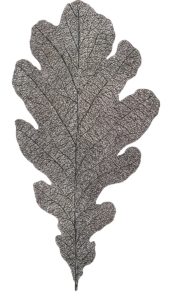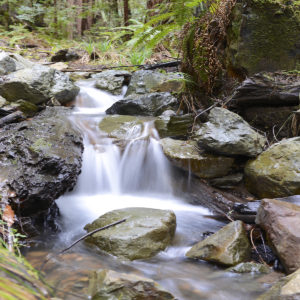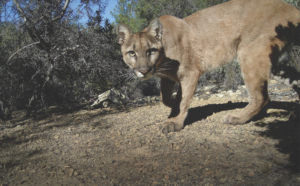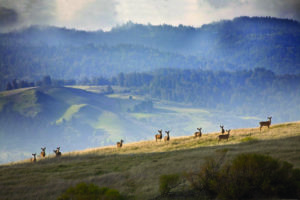The Midpeninsula Regional Open Space District (MROSD, or “the District”) was formed by voters in 1972 to create and preserve a greenbelt in the Santa Cruz Mountains that would help provide a scenic backdrop for the rapidly growing communities of the San Francisco Peninsula. Initially approved in northwestern Santa Clara County, the District’s boundaries were ex-panded by voters in 1976 to include much of southeastern San Mateo County. In 1992, the District annexed a small part of Santa Cruz County. Today, its land holdings include nearly 50,000 acres in 26 public open space preserves. Most of the District’s preserves are along Skyline Boulevard in the Santa Cruz Mountains. However, at the request of three coastal elected bodies, and with the sanction of a majority of the area’s voters, the District is now planning to extend its boundaries out to the coast. The Coastal Annexation Program will enter its final phase in the fall of 2003 with an application for annexation to the San Mateo County Local Agency Formation Commission, followed by public hearings before the Commission.
The District has a strong conservation focus, outlined in its mission “to acquire and preserve a regional greenbelt of open space land in perpetuity; protect and restore the natural environment; and provide opportunities for ecologically sensitive public enjoyment and education.” The District defines open space as “land area that is allowed to remain in or return to its natural state.”
Craig Britton, the District’s general manager, says, “If you look up to hills in southern California, you see—when you can see—housing. Here, when you look up, you see natural areas, and that was the whole idea.” Britton says his philosophy of open space acquisition is a simple one. “They’re printing money every day, but they aren’t making more land. We should borrow, like every property owner, and buy every piece of strategic open space land we can get a hold of.” Britton says the District today owns about 50,000 acres of land that cost roughly $200 million, an average of $4,000 per acre. These acquisitions occurred over a period of 30 years as land prices in the Bay Area soared. Had they been purchased at today’s prices, some of the District’s best-loved urban preserves would have been unaffordable.
In keeping with its mission of preservation and ecologically sensitive public use, the District provides open space access with few amenities. The preserves are free and open to the public year-round. Most have no more than a dirt parking area and a pit toilet. The attraction, of course, is the land itself and the trails. Dennis Danielson, supervising ranger at the District’s Skyline office, says, “We’re almost like a mini-wilderness area. We don’t have the developments that you would see in the state parks or in a county park. Mostly just trail-based access to wonderful natural areas of great beauty.”




